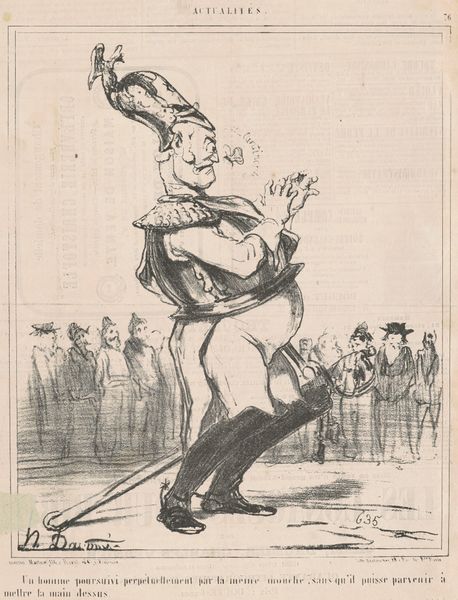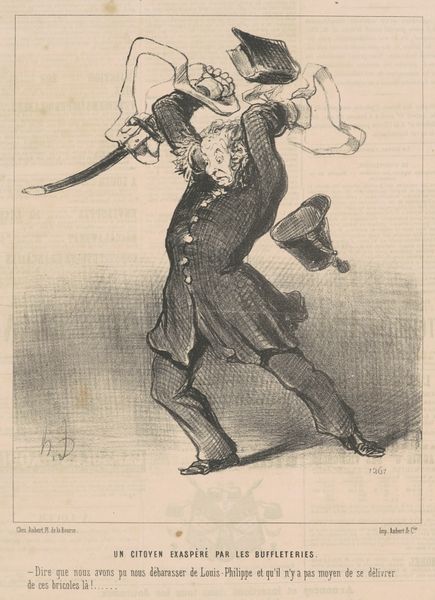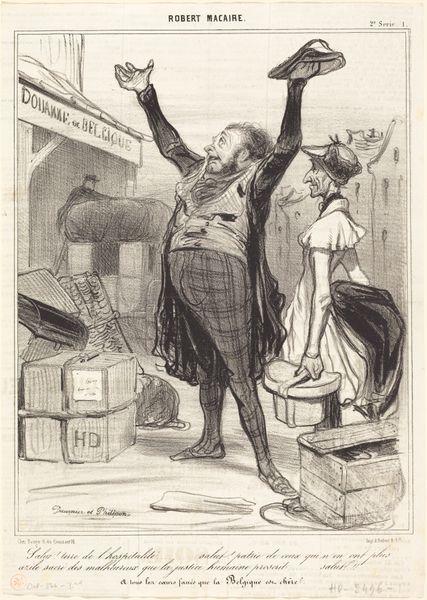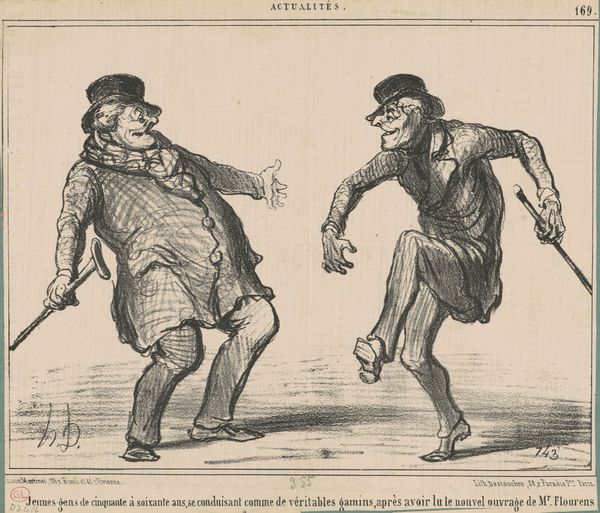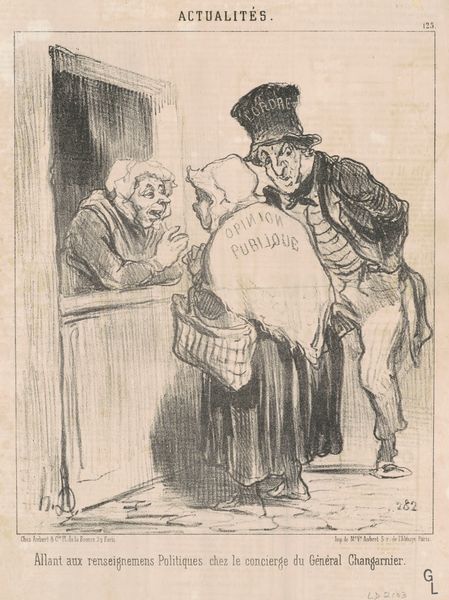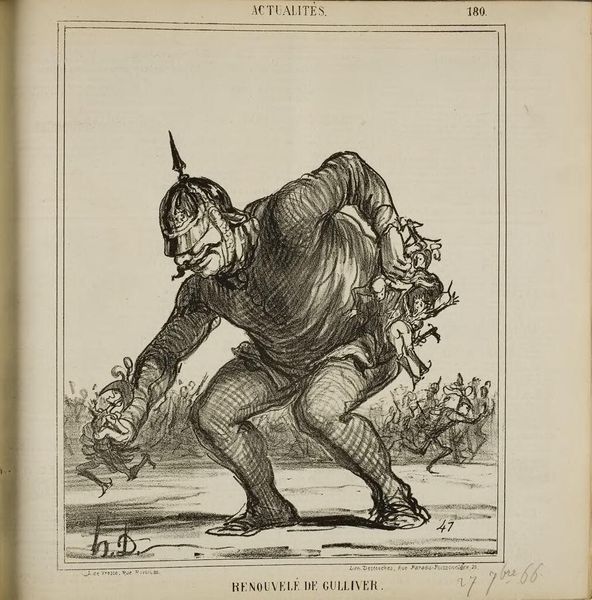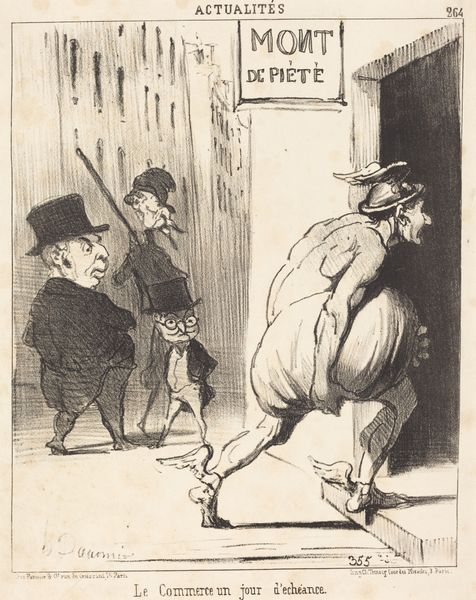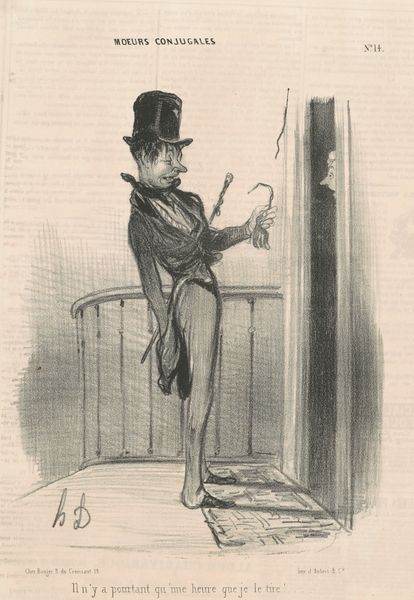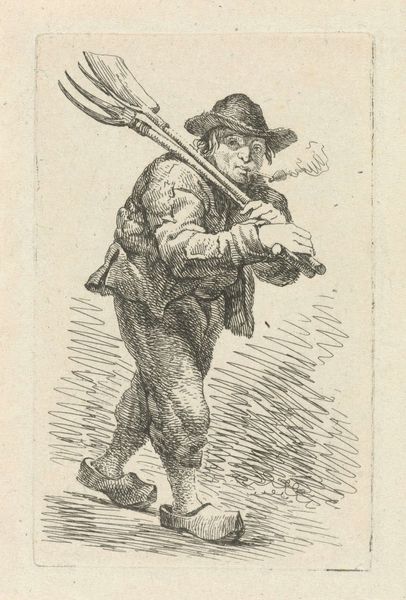
lithograph, print
#
portrait
#
lithograph
# print
#
caricature
#
figuration
#
realism
Copyright: National Gallery of Art: CC0 1.0
Curator: This is a lithograph by Honoré Daumier, from around the 19th century, entitled "Un Bonapartiste nouvellement converti," or "A Newly Converted Bonapartist." Editor: Immediately striking is the sheer physical presence of this character. His exaggerated posture and form imply a potent, perhaps aggressive, energy. What statements do you find in these kinds of lines, particularly using the lithographic process for dissemination? Curator: Daumier was a master of visual rhetoric. Note how the figure clutches what appears to be a large club labeled "thode d'honneur donnée par rator," a term hinting at imposed, perhaps manufactured, honor. Editor: Exactly! The "means of production" of that honor becomes questionable. The lithographic technique, allowing for mass production, is key here. How accessible would prints like this have been to ordinary people, and what kind of visual culture did they promote? Curator: They were fairly accessible, meant to be circulated widely through newspapers and journals. He also contrasts the inflated form of the man with the classical portrait in the background, labeled “Henri,” further satirizing the man’s claim to status through Bonapartism. Editor: And look at the shadows – they are crudely, and probably rapidly, etched onto the page. It is so immediate! The raw texture makes you think about the labor involved in making this image quickly and for a wider public. Curator: Daumier exploits familiar iconography to appeal to a certain memory or sensibility, a sense of shared identity. Even without being able to read the title, one intuits he's ridiculing blind allegiances. Editor: But his ridicule isn't purely intellectual; there's a gut-level reaction elicited by that distorted form, rendered using those distinct lithographic lines and ink applications. We have an art practice very aware of both materials and message, a compelling unity. Curator: Indeed. He channels prevailing sentiment regarding the volatility of political allegiance itself. Editor: The more one examines it through its production, distribution, and imagery, the more layers reveal themselves about political identity, material accessibility and the act of ridicule itself. A potent print.
Comments
No comments
Be the first to comment and join the conversation on the ultimate creative platform.
